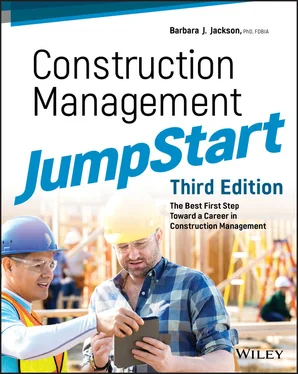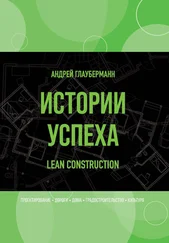A practice utilized to speed up a job by overlapping the design phase and the construction phase of a project. It's often applied in design-build or construction management project delivery.
Whereas design-bid-build has linear sequencing of the work, design-build often integrates and overlaps design and construction and allows for something called fast tracking . If you remember me stating earlier in the chapter how important time is for many clients, you will understand why design-build has become the project delivery method of choice for many owners today.

Under the design-build method, the design-builder warrants the sufficiency of the plans and specs to the owner. The design-builder is liable for any gaps between the plans and specs and the owner's requirements for the performance of the building. If there are any shortfalls, the design-builder picks up the tab.
One of the greatest advantages to design-build is the possibility for early contractor involvement. Under this method, all of the team players—the designers, the contractors, the material suppliers, and the manufacturers—have an opportunity to be in continuous communication throughout the project.
Today there is an evolved application of design-build identified as Progressive Design-Build where the owner and the design-builder engage even earlier, before any design or pricing has been established by the owner. This approach has become quite popular with very large, complex projects such as the $2.4 billion San Francisco Airport Terminal 1 Redevelopment project, where the owner wants to take full advantage of the multidisciplinary team and its expertise at the earliest stages of project planning. You can access the Progressive Design-Build Primer published by the Design-Build Institute of America at https://dbia.org/wp-content/uploads/2018/05/Primer-Progressive-Design-Build.pdf.
A qualifications-based design-build application where the design-builder is selected primarily on qualifications, followed by a process whereby the owner then progresses toward a design and contract price with the delivery team.
But what is a design-build entity, anyway? Where are the architect and the contractor in all of this? Actually, they're still two of the primary players, but how they organize themselves to do business is what differs. The design-build entity can be configured in three basic ways:
Contractor and designer partnership In this scenario, two firms simply decide to work together on a single project with one of them at risk for the project. A construction firm and a design firm join forces to go after a project. One of the two partners takes the lead and actually enters into a contract with the owner to provide both the design and construction services. For example, under the contractor-led design-build model, the architect is hired by the builder (not by the owner as in design-bid-build), and the builder actually holds the contract to deliver both design and construction. If it is a designer-led design-build model, the opposite is true. The architect or engineer hires a contractor and is obligated for both the design and the construction. The partnership created is simply an agreement to work together. There is no new legal entity created under this setup. The second party is a subcontractor to the first but has no direct contract with or obligation to the owner. Contractor-led design-build is the most prevalent form practiced today.NOTEApproximately 54 percent of all design-build projects are led by contractors. Construction managers who have a desire to participate on design-build projects should be knowledgeable regarding the design process and enjoy working with architects in a team environment.
Full-service design-build firm This is probably my personal favorite when it comes to design-build, of which I am a big fan. In this model, the design professionals and the construction professionals work for the same firm under the same roof. This situation permits no excuses for not communicating! One can just walk down the hall when a question or problem arises. You can imagine how efficient this process can be compared to the phone tag and email lag problems that are common when team members try to communicate from a distance. Additionally, there commonly exists a higher level of trust among the various disciplines working under the same roof than what you would find under the other models. This, of course, adds to the efficiency.
Joint venture The joint venture configuration is similar to the designer and contractor partnership with one exception: the design firm and the construction firm actually create a legal entity, the joint venture, for the purpose of carrying out the design and construction of a specific project. Under this arrangement, both parties are at financial risk for delivering the project.
Teamwork and trust are really the keys to successful project delivery regardless of what method is used. Although the design and construction industry has historically been known more for its adversarial nature than for its collaborative spirit, things are gradually changing. The bottom line is that today's projects are simply too complex and too expensive to let petty issues and egos get in the way.
Integrated Project Delivery
Although the term integrated project delivery (IPD) is not new, it really gained prominence in 2007 when the American Institute of Architects formally began to articulate it as a unique approach to designing and constructing projects. You can learn more about IPD in the AIA's 2007 “Integrated Project Delivery: A Guide” document found at http://info.aia.org/siteobjects/files/ipd_guide_2007.pdf. In that document Integrated Project Delivery is defined as follows:
integrated project delivery
Any project delivery method that contractually engages the contractor responsible for constructing the project at the beginning of the design process. Both design-build and at-risk CM are considered integrated project delivery models. However, there is a more formalized method of IPD that utilizes a multiparty agreement and represents a unique project delivery approach.
Integrated Project Delivery (IPD) is a project delivery approach that integrates people, systems, business structures, and practices into a process that collaboratively harnesses the talents and insights of all participants to optimize project results, increase value to the owner, reduce waste, and maximize efficiency through all phases of design, fabrication, and construction.
IPD principles can be applied to a variety of contractual arrangements, and IPD teams can include members well beyond the basic triad of owner, architect, and contractor. In all cases, integrated projects are uniquely distinguished by highly effective collaboration among the owner, the prime designer, and the prime constructor, commencing at early design and continuing through to project handover.
Generally speaking, integrated project delivery is any form of project delivery that brings the contractor on board as part of the team at the onset of the design process. In other words, instead of waiting until the design is complete, the contractor who is going to build the project is on board while the design is being developed. In this arena, the construction manager will have an opportunity to contribute their expertise relative to constructability, building costs, labor availability, scheduling issues, and the like. Because the design has such an impact on all of these construction issues, having the contractor's input up front helps the architect make better design decisions and avoid project delays, cost overruns, or unconstructible building details.
Читать дальше













